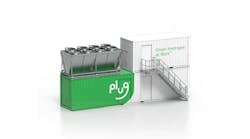Energy Storage Regulations needed, says Zolaikha Strong of CDA
Energy storage use is growing quickly: About $240 billion will be invested in storage grid applications in the U.S. over the next 10 years, says the Copper Development Association, whose members provide copper for energy storage units.
Investment from the government and venture capitalists, plus successful demonstration projects have helped advance energy storage, CDA says. For example, the DOE’s Smart Grid Demonstration Grants project has invested $772 million into energy storage, providing a capacity of 537.3 MW, says CDA.
But energy storage could still use a boost, in the form of investment tax credits and policies to incorporate energy storage into grid modernization, says Zolaikha Strong, director of sustainable energy for the CDA.
Energy storage helps energy producers yield less carbon. “But the cost of it can be difficult to swallow,” says Strong. “An investment tax credit allows it to be more affordable. Congress has looked at this from the lens of renewables.”
But Congress needs to introduce an investment tax credit specifically for energy storage, she says. CDA wants an investment tax credit that would be available to anyone looking at storage system, including energy users, developers or utilities.
In addition to an investment tax credit, the industry would get a boost from policies that ensure energy storage is considered as an ancillary service as the grid gets modernized, she said.
“With grid modernization, you need ancillary services. It would be beneficial to have storage as a real consideration for ancillary services,” Strong said. Traditional generating units generally need to ramp up before coming online, she said. But batteries don’t need to take that time to ramp up; they kick in immediately. “Battery storage is an important part of modernizing the grid,” she said.
The CDA has an interest in boosting energy storage use because three to four tons of copper are used for each megawatt of energy storage. Copper is integrated into storage units because it’s a powerful conductor.
Growth in the energy storage market over the next 5 years is estimated at between 2 to 4 GW, with an estimated copper demand of 900 to 3,000 tons, according to the CDA.
The copper industry has a big stake in the growth of the energy storage market. But the truth is, we all do. Energy storage boosts the benefits of renewable energy, cuts greenhouse gas emissions, and allows energy users to go off grid.








